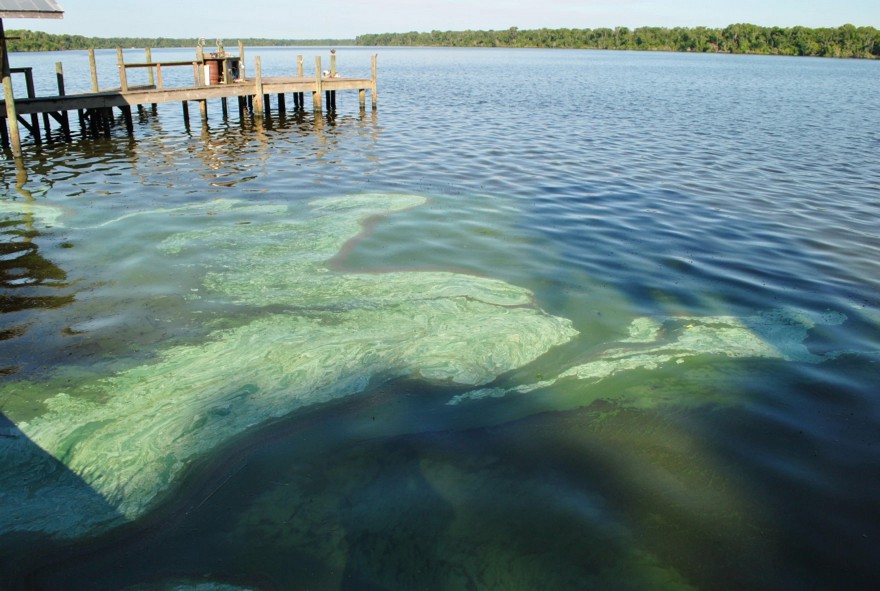
New research finds that human pollution influences the severity of red tides more directly than scientists previously understood. The connection sheds light on the need for better water-quality monitoring statewide — and ultimately, to reduce the nutrient pollution flowing into Florida’s waterways.
When the ominous rust-colored cloud of red tide begins to saturate coastal waters in Southwest Florida, it means beach closures. Asthma attacks. Itchy skin and watery eyes. Dead fish and a wretched smell that can spoil the salty breeze.
Now, scientists also know it means pollution made the scourge worse.
New research from University of Florida scientists is “providing clarity in what was previously a muddied landscape,” said environmental engineer Christine Angelini, a co-author of the study.
Red tide prevalence data in the Gulf of Mexico near Charlotte Harbor show where blooms have appeared in three-month intervals between 2012 and 2021, the period analyzed in the recent UF study, represented as Q1, Q2, Q3 and Q4. Red circles indicate Karenia brevis cell counts, with larger circles indicating higher counts. Open circles indicate samples with zero cells. Cell counts below 100,000 are considered low; above 1 million high. Data provided by the Florida Fish and Wildlife Conservation Commission and NOAA National Centers for Environmental Information’s Harmful Algal Blooms Observing System.
A natural history of blooms
Records of red tides are found in the earliest chronicles of Florida. The Spanish conquistador Cabeza de Vaca noted in the 16th century that native people marked seasons based on “the times when the fruit comes to measure and when the fish die and the stars appear, in the observance of which they are very skilled and well-practiced.”
But in the 21st century, red tides have become so intense that they’ve caused harm to ecosystems and people — and scientists have seen evidence that they could be getting worse.
Florida in 2018 and 2019 experienced one of the worst red tides in its history, lasting 15 months and causing respiratory infection outbreaks and leaving dead marine life along the southwest coast.
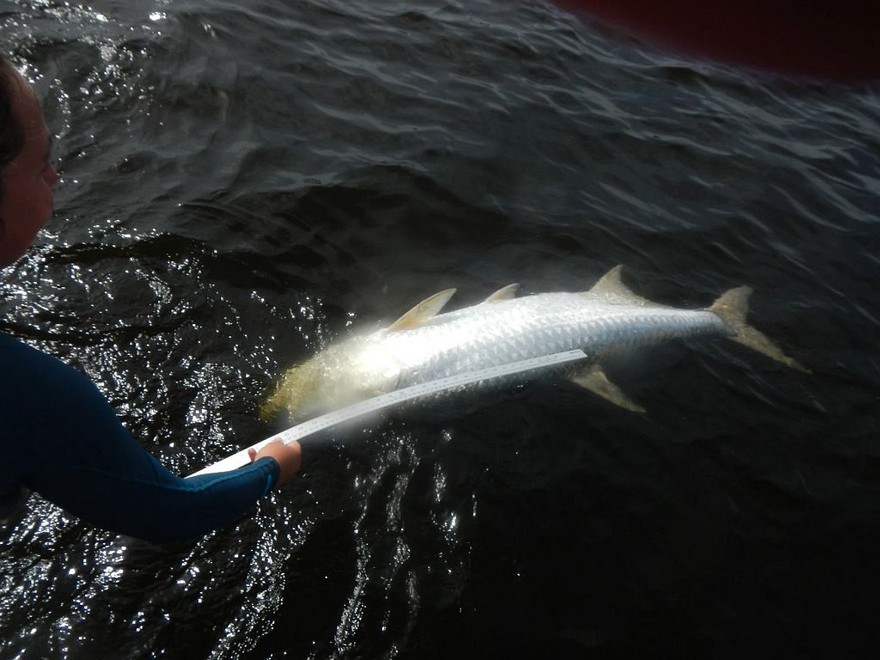
Red tide is a type of harmful algal bloom. It’s caused by a single-celled species called Karenia brevis that feeds on nitrogen and phosphorus — the two nutrients of highest concern in Florida’s waterways. An excess of these nutrients can cause “blooms,” when the organisms multiply out of control. In the process, the algae suck oxygen out of the water and produce a neurotoxin that can cause respiratory problems in humans.
“Having this connection to people on the coast means that we can have an impact on the future,” said Eric Milbrandt, a co-author and director of the marine laboratory at the Sanibel-Captiva Conservation Foundation. “We can engineer, we can regulate, [and] we can decrease the nutrients and potentially then decrease algae blooms.”
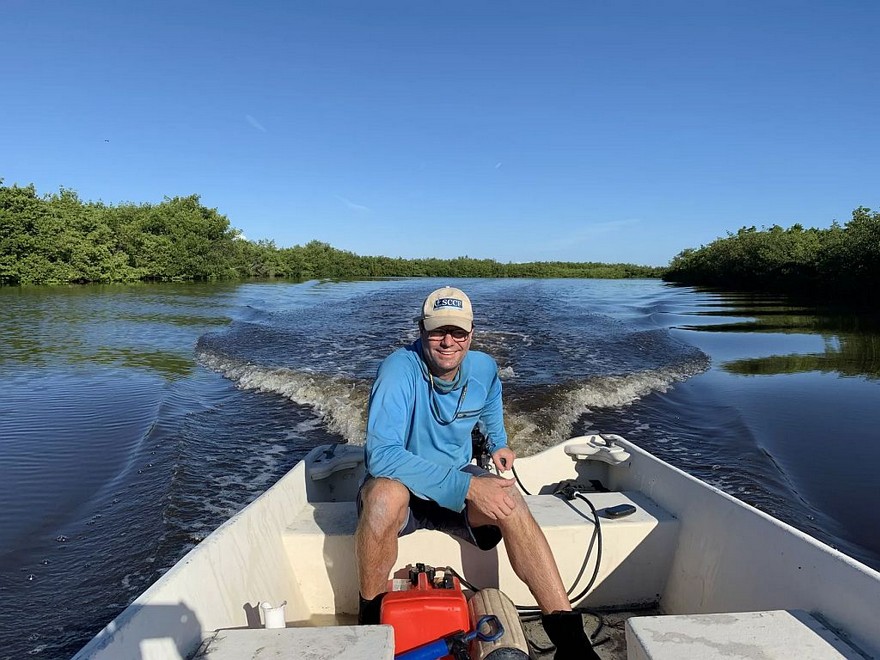
Milbrandt and others on barrier islands in Southwest Florida have witnessed red tide in their own backyards. He says they have seen them intensify over the past decade near the mouth of the Caloosahatchee.
During a bloom, K. brevis turns the water opaque and tints it the color of root beer — Milbrandt’s apt description. When the wind blows, these organisms release toxins that cause runny noses, eye irritation, coughing and asthma attacks.
Marine life suffers, too. The neurotoxins make it difficult for fish to move their gills, effectively suffocating everything from “tiny anchovies to goliath groupers,” Milbrandt said. One year, a whale shark washed ashore — an animal that can grow up to 33 feet long. Even invertebrates on the seafloor can die from severe red tide events that create oxygen-depleted zones underwater. The rotting marine life causes a “horrible” stench, he added.
“Red tide happens, and we’re never going to make it go away completely,” said UF environmental scientist Miles Medina, lead author of the new study. “But if we can reduce the impacts that go along with it, we think that’s worth looking into.”
In search of data-rich waterways
Scientists at the Center for Coastal Solutions are working with SAS Analytical Software, an independent company, to create a public portal in the next three to five years that standardizes public-facing water-quality data from multiple organizations, agencies and other partners around Florida – like a “one-stop shop for data,” Milbrandt said.
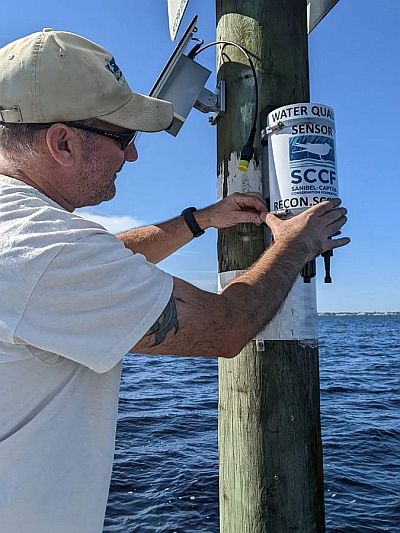
The resource aims to integrate different types of data–like red tide and ocean currents, for example– using standardized measurements. Doing so will make it easier to obtain more comprehensive environmental data from anywhere in Florida, Medina explained.
“You need enough data to work with,” Angelini said. “We would love to be able to do this analysis in all the different watersheds across the state, but there isn’t sufficient information to apply these types of approaches necessarily everywhere.”
The Sanibel-Captiva Conservation Foundation’s River, Estuary and Coastal Observing Network, known as RECON, offers an example of how small organizations can contribute to this larger database. RECON consists of seven stations collecting hourly water-quality data, including dissolved oxygen, temperature, salinity, algae, and a measure for nitrogen and phosphorus.
Milbrandt, who helped start and continues to monitor the network, said it captures shorter-term events that allow scientists to see what’s happening over a few days or weeks as opposed to monthly data that creates gaps. With monthly samples, “you’ll miss the most important things happening,” Milbrandt said, such as intense rain that might churn sediment, altering conditions over the span of perhaps only a few days.
The detail allowed them to better understand observed patterns in the estuary and thus make stronger conclusions about the study’s results, like detecting the lag time between changes in freshwater flow and changes in red tide abundance.
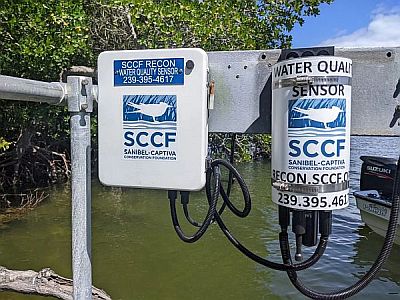
RECON is inexpensive and easy to maintain, Milbrandt added. It requires a humble team of two people and a small boat.
Increased collaboration between agencies and organizations to collect more frequent and abundant data is now happening, Milbrandt explained, such as ramped-up efforts for more red tide monitoring in the Gulf of Mexico.
“This is where organizations…that understand the value of continuous data can come in and fill a gap,” Angelini said.
If Florida had a streamlined, statewide data network, she added, we could “start to draw conclusions that we couldn’t draw before.”
The Caloosahatchee as a microcosm
Making the direct link between human activity and red tide severity was an important step in science, the authors explained, and sheds light on the state at large.
“What’s happening in this watershed is not dissimilar to many other places in the state of Florida,” Angelini said.
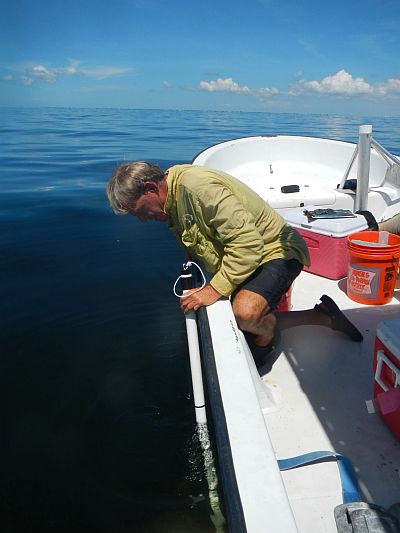
Another big source of nutrients is outdated infrastructure to handle stormwater runoff and wastewater treatment. As more people have moved into Florida’s urban centers, the technology used to treat waste and stormwater has failed to keep up with swelling populations and the more-severe storms associated with climate change. In rural areas, septic tanks remain a concern.
There’s another consideration, too. When humans manipulate natural water flows, they also move pollutants.
The Caloosahatchee River’s flow is managed by the Army Corps of Engineers, which decides how much water to discharge from Lake Okeechobee based on weather conditions such as higher volumes of rain and how much water can safely be held behind the Herbert Hoover Dike, which is about 80 years old and poses flooding risk to surrounding communities.
Though necessary to keep people safe from a flood catastrophe, this control creates unnatural flows of polluted water from the Caloosahatchee to the west and the St. Lucie River to the east compared with historical water flows before the Everglades were drained.
“Water either goes out or doesn’t, and that’s a human decision,” Medina said.
An important lesson for Florida
The results of the study signaled to the authors one important takeaway: If humans are influencing environmental flare ups in one area, the same likely goes for other waterways.
Red tide is to Southwest Florida as fish kills are to Miami’s Biscayne Bay, and both regions struggle with algal blooms.
Nitrogen, among a long list of other pollution concerns, is a “persistent problem” causing harmful algal blooms year after year, explained John Kominoski, an ecosystem ecologist and biogeochemist at Florida International University. >
Algal blooms have raised added concern in South Florida as summers have gotten hotter, sometimes causing massive fish kills like the one in August 2020.
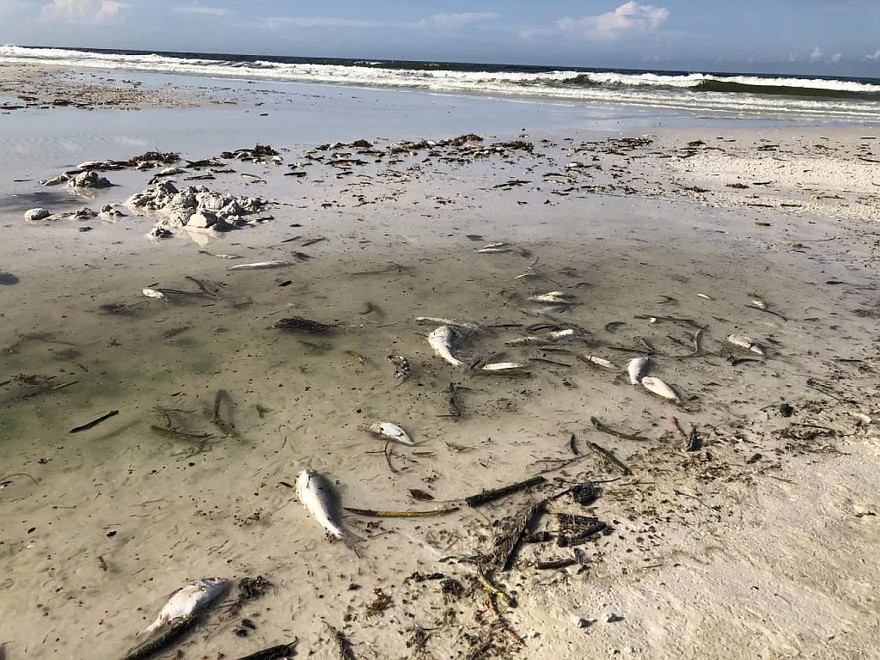
Kominoski refers to Biscayne Bay as a “trouble spot.” Better data and water-flow management are both keys to understanding the source of the bay’s problems, Kominoski explained. An extensive canal system has altered historical water flows from the Everglades, meaning higher concentrations of nutrients get dumped into Biscayne Bay all at once.
“If we can figure out where nitrogen is a problem, like our canals, we can be aware of what the nitrogen levels are when we open water and release it into the bay,” he said.
Once he and other scientists locate pollution hotspots, he said they can start to find solutions, such as releasing nitrogen back to the atmosphere.
“If we can’t manage nitrogen and phosphorus and regulate that — and that’s like the ‘easy stuff’ — then we have our work cut out for us,” Kominoski said. “The nitrogen issue is a challenge, but it’s fixable.”
Despite a $23 billion Comprehensive Everglades Restoration Plan to restore water quality in South Florida, the region still lags behind examples like Tampa Bay, where cooperation and commitment to stem nutrient pollution have helped restore clarity, seagrasses and marine life.
Long-term plans can overlook short-term needs, says David Tomasko, director of the Sarasota Bay Estuary Program in southwest Florida and a co-author of the red tide study.
“[Biscayne Bay] has needed nutrient load reduction projects, like, yesterday,” he said. “You don’t have 10, 20 years.”
In contrast, Tomasko says Sarasota Bay is “on a positive trajectory,” explaining that water quality has improved over the past five years.
The Sarasota Bay Estuary Program is part of the Environmental Protection Agency’s National Estuary Program, which helps communities across the nation develop management plans based on science to inform a policy board of local elected officials, state representatives and members of the EPA. Tampa Bay, Indian River Lagoon and Charlotte Harbor are Florida’s other program locations.
In Sarasota Bay, we’re confident we can turn this around, because we’ve identified the scope of the problem, identified what needs to be done, and our local governments have stepped up to the plate.
“David Tomasko
The program’s scientists recommend how much they need to reduce nutrients from flowing into the bay, which they determine based on current and historical water quality data. Florida’s water was never quite “pristine,” Tomasko said, but humans have made it worse.
“We’re making it more likely that we’re going to get all sorts of nutrient-related algal blooms, and that’s seemingly what’s happening,” he said.
Beyond algal blooms, seagrass losses statewide have been the oft-ignored “canary in a coal mine,” Tomasko added, which has an impact on fisheries, manatee deaths and carbon storage in marine environments.
“In Sarasota Bay, we’re confident we can turn this around, because we’ve identified the scope of the problem, identified what needs to be done, and our local governments have stepped up to the plate,” he said.
Tomasko added that political differences don’t always stand in the way of environmental progress, using Sarasota as an example of cooperation for cleaner water.
“There hasn’t been a Democrat elected to the Sarasota County Commission in 20 years, and it doesn’t matter,” he said. “They understand water quality, and so our local governments have committed to spending $900 million over the next five to 10 years to adjust water quality.”
In March, Sarasota celebrated a more than $200 million project to renovate the largest wastewater treatment plant in the watershed, which Tomasko expects to reduce nutrient loads by up to 90%.
He added that it’s not enough to spend $30 million on an area like Indian River Lagoon that requires $5 billion worth of repair. “Statewide, we need to make sure people understand how big the problem is and how much money is going to be required to turn it around,” he said.
That said, it doesn’t make sense to invest billions in restoration without also working to stem pollution and the crises it causes.
“There’s a number of locations here in the state where we have to fix the quality of the water before we can think about regrowing seagrass meadows or mangrove forests or oyster reefs,” Angelini said. “We’ve got to work on water quality first.”
This story is part of the UF College of Journalism and Communications’ series WATERSHED, an investigation into statewide water quality marking the 50th anniversary of the Clean Water Act, supported by Pulitzer Center’s nationwide Connected Coastlines reporting initiative.
